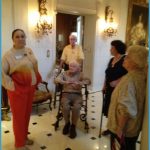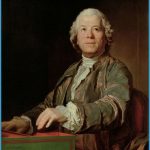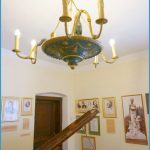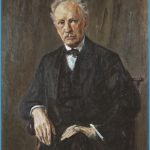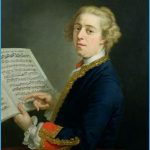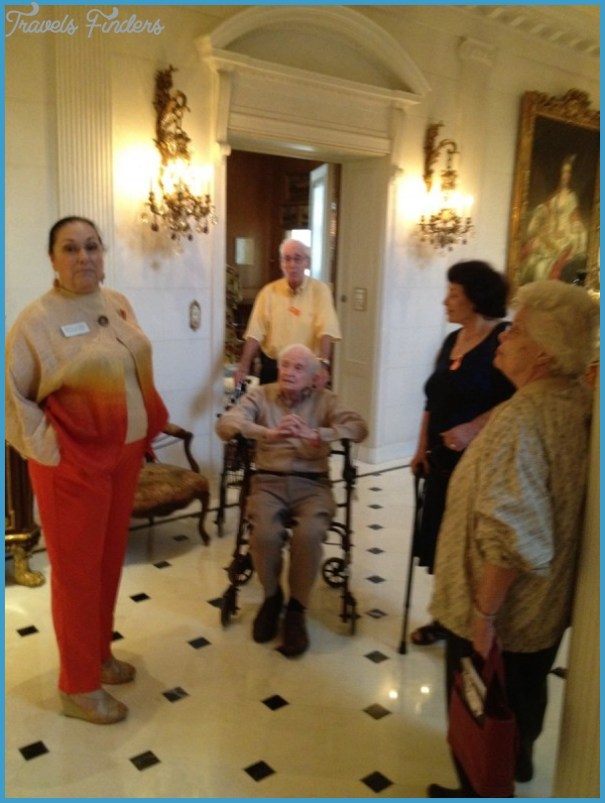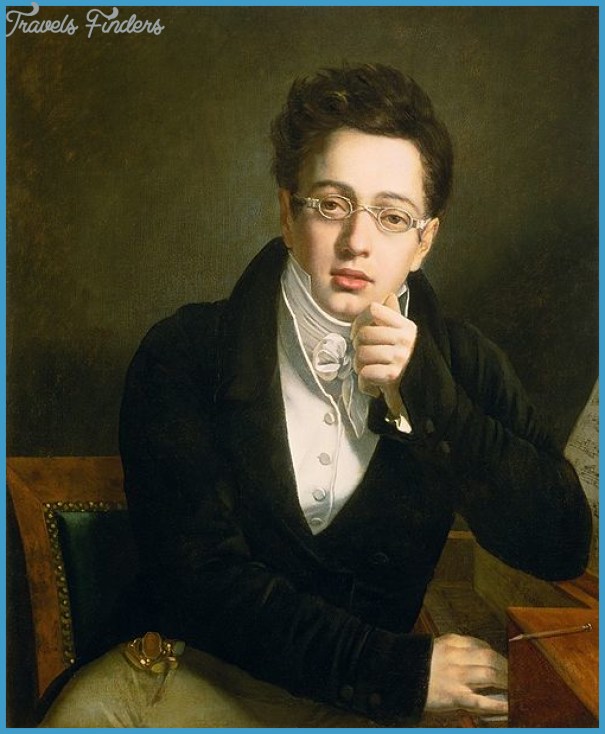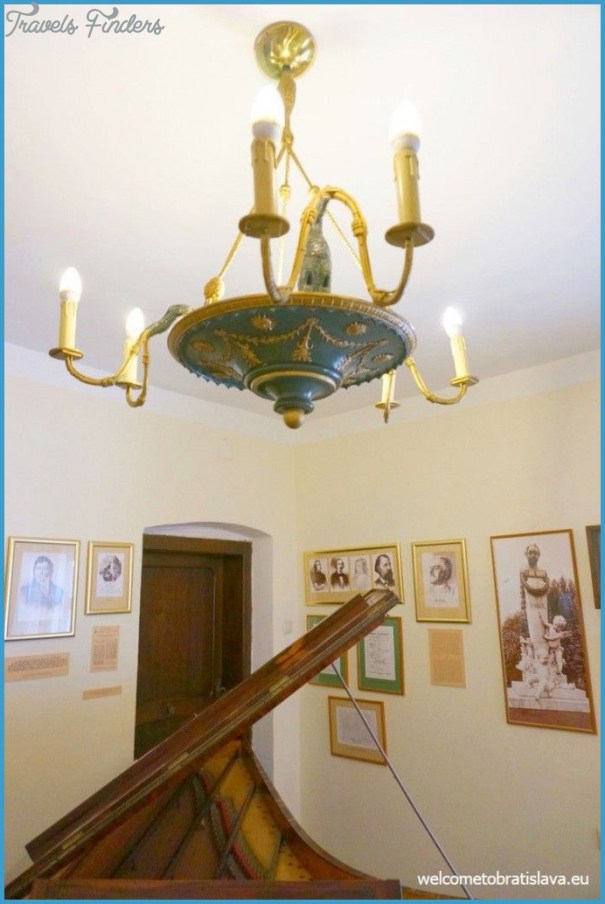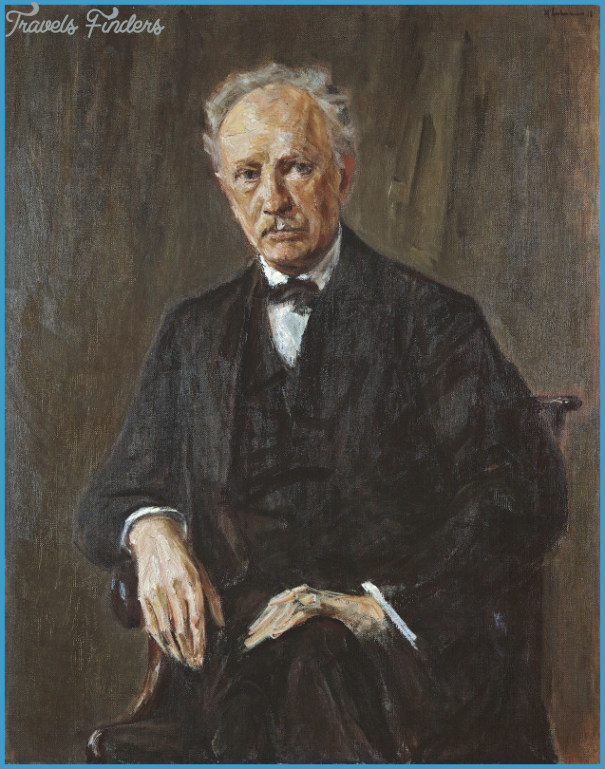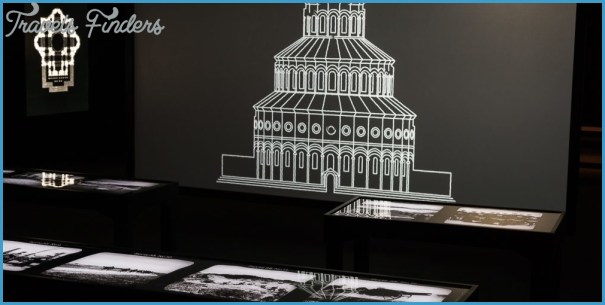Of the composers commemorated by memorials considered in this book, the earliest are Guido d’Arezzo and Hildegard of Bingen. The only Renaissance composer is Palestrina, and just two, Scheidt and Schutz, flourished as long ago as the 17th century. A count shows that five were born in that century, 12 in the first half of the 18th century and 26 in the second, 44 in the first half of the 19th and 94 in the second, and 26 in the 20th. There is a sharp peak for dates of birth in the 1870s and a rapid tailing-off after 1910.
EARLY COMPOSER MUSEUMS Photo Gallery
Most but not all of the early composer museums are dedicated to composers universally regarded as great. The first was Mozart’s Geburtshaus in Salzburg. A centenary exhibition had been held there in 1856, and in 1880 part of the house was opened as a museum. More surprisingly, a Musee Gretry was set up at the Liege Conservatoire in 1882, by a keen collector and enthusiast; in 1913 it moved to his birthplace. The Liszt flat in Weimar was set up as a museum in 1887, at the command of the Grand Duke. Three years later the Beethoven-Haus at Bonn opened as a Entrance ofSuppes Sophienheim, Gars am Kamp museum. Also in 1890 a Saint-Saens display was opened in Dieppe, based on objects that the composer himself had given to the museum in the town where his family had originated, and this became a Musee Saint-Saens in 1897. In 1895, when Suppe died, his wife turned their house at Gars am Kamp into a museum to him ; the same year, a private collector donated his Wagner collection, previously exhibited privately in Austria, to the city of Eisenach, where it served as the basis of a museum.
The years before World War I saw the establishment of several further museums, mostly in Germany and Austria: to Brahms in Gmunden, Bach in Eisenach, Wagner in Graupa near Dresden, Haydn and Schubert in Vienna, Schumann in Zwickau, Liszt in Raiding, Spohr in Kassel and Silcher in Schnait, near Stuttgart. In Italy the Rossini and Donizetti houses opened, and in Belgium the house where Peter Benoit, a champion of the Flemish-speaking population, spent his early months was opened as a museum within a year of his death. Several of these museums came into existence through public interest and municipal enterprise, some through private benefactions and some through families.
The museums opened before 1914 – it is impossible to be certain that there were no others, not now known to us – are then as follows: to Bach, Haydn, Gretry, Mozart, Beethoven, Spohr, Silcher, Rossini, Schubert, Donizetti, Schumann, Liszt, Wagner, Suppe, Brahms, Benoit and Saint-Saens. The fact that 14 are to German, two each to Italian and French and one to Flemish speakers is a commentary on the German musical hegemony of the time. But the oddity of the assortment is worthy of comment too because it emphasizes the chance factors that determine whether or not a particular composer shall be commemorated. The central figures here present no problems, but the inclusion of Silcher, Suppe, Benoit and Saint-Saens is less a commentary on the importance of their music than on chance factors: respectively, an association with a powerful lobby, the existence of a devoted widow, a representative role in a politically oppressed group, and a readiness to give away one’s possessions.
The establishment of a museum to a composer is not, then, a simple measure of his generally acknowledged importance or recognized greatness. There are numerous other reasons why a museum may or may not be founded, then, later or now. It may be in a house that he occupied and where his actual working environment can be evoked only if the original house stands; if it does, the project will depend on where it is, on whether it has remained in the composer’s family or has been sold, and whether it is still lived in; on whether there exist any artefacts connected with the composer that can suitably be shown, and on whether portraits, drawings, documents and music can be displayed; and whether the necessary funding can be found. In some cases a widow, child or sibling of the composer has partly underwritten a museum. Otherwise the availability of funding will depend on the readiness of national, regional or local authorities, business firms, foundations or private individuals to provide it, and on the readiness of a group of enthusiasts to seek it and organize the enterprise. If sufficient local pride and prestige are involved, this may happen quite readily – in Italy, for example, where banks and local businesses, as well as local government, are usually eager to provide support. In such cities as Paris and London the situation is different. There the cost of property is almost prohibitive for a small museum, and cultural activity exists at such a level that civic pride in the existence of a museum is a small factor. Combined with the long traditions of centralization in France and England, with their single court and single state structure, which have drawn most significant composers to the capitals, it is easy to see one reason why there are so few composer museums in those countries. Rather different factors apply, of course, to the establishment of a composer commemoration within an existing museum. But it will be clear that, where there is a substantial element of national, regional or local pride, and especially where the composer represents something rather more than simply a body of music, for example a political aspiration, the establishment of a museum is likely to be far easier.


